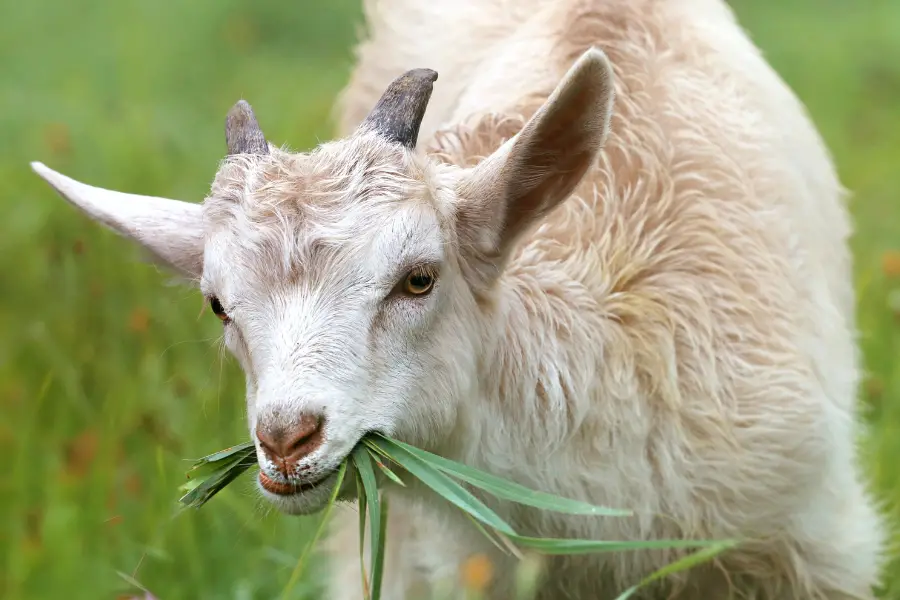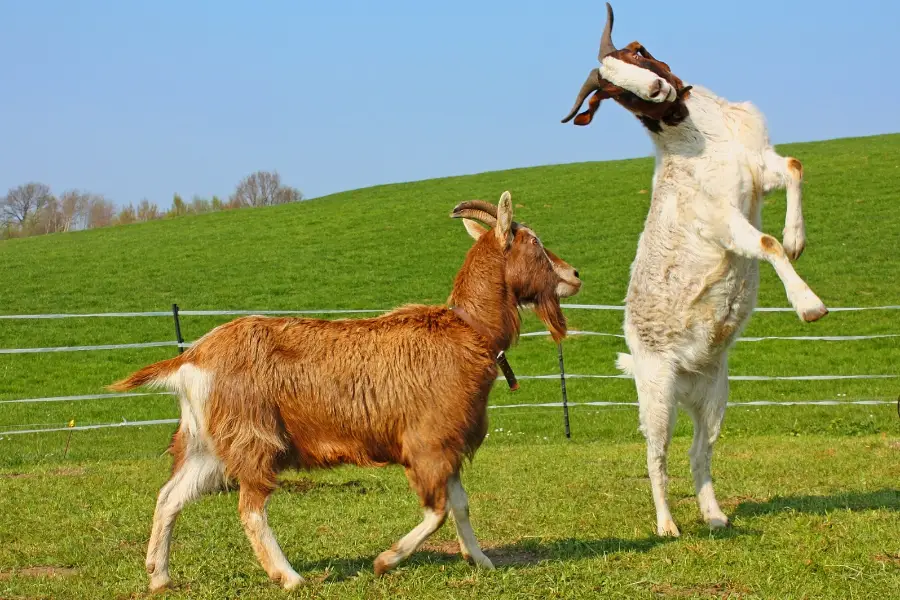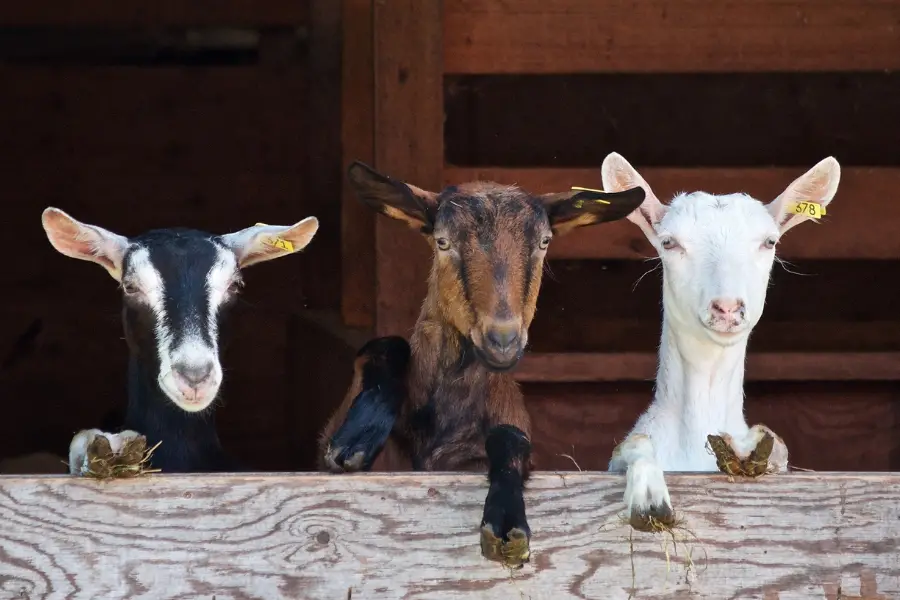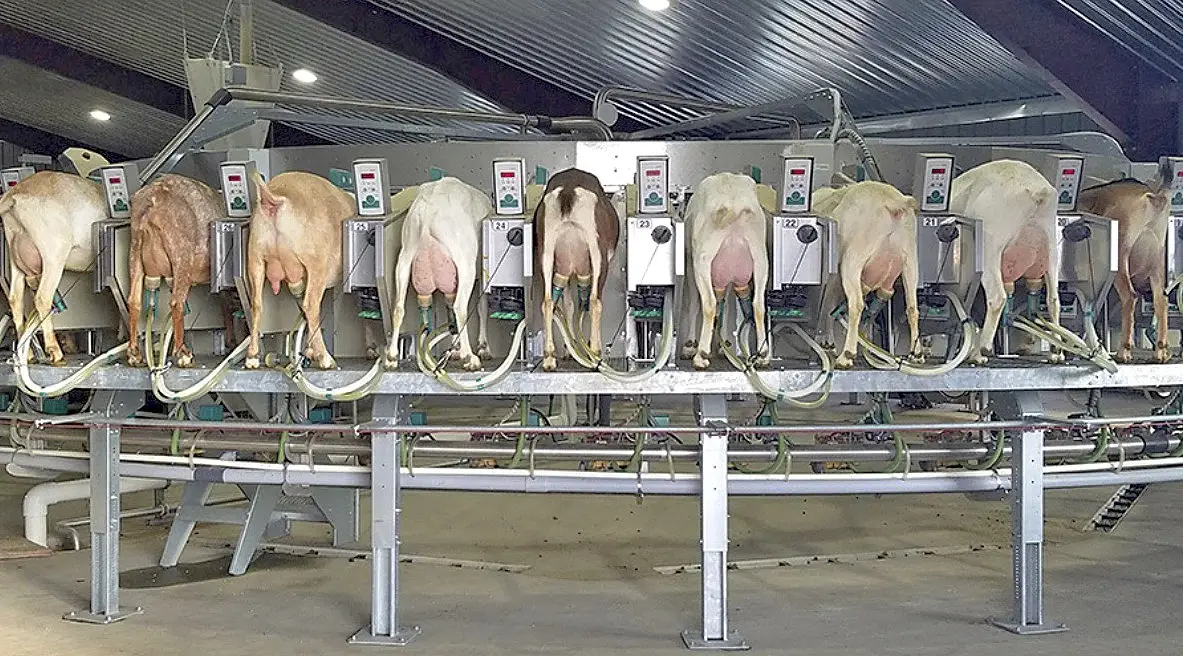
Since 10,000 B.C., humans have been raising goats for milk and meat. And today, because of the huge demand for goat milk, and the great cheese that you can make out of it, raising dairy goats has become more popular than ever in this country.
Milk from dairy goats has a variety of uses. First, goat milk is healthy to drink, and makes excellent cheese. But is is also used in non-food products such as goat milk candles, rich and creamy goat milk lotion, and goat milk deodorant.
If you are thinking about raising dairy goats, obviously your main objective is to get milk from your does in the most efficient and convenient way possible. If you’re starting out with one or two animals, you can probably get by with a bucket and your own two hands as your milking machine. But if your goal is to produce enough goat milk to market it, or to make cheese, you’ll need more lactating does, and the machinery and supplies to make your dairy operation run smoothly.
Table of contents
This guide will help you get started choosing the best equipment and supplies for your goat dairy endeavor.
Best Goat Milking Machine
No matter what type of milking machine you get, the basic principle of operation is the same. Power drives a pump which creates a vacuum and milk is drawn from the goat’s teat, out through tubes, and into a closed container. Throughout the operation, a mechanism called the pulsator, located in the teat cup liners, massages the teats externally. This helps maintain blood circulation to protect the teats from damage and pain. A good milking machine should have a proper pulsation and vacuum system to maintain steady, safe milking.
Milking machines are categorized by their power source, and there are four main types. Those that run on electric power, battery, gas, and manual machines.
- Electric powered milkers are good for small to medium farms. Your running cost is lower because electricity is cheap, and they are powerful and efficient. You are limited to the length of your power cable, though.
- Battery-powered milking machines are more portable and do well for smaller farms. They are a cheaper option, but they don’t have the power or capacity that an electric milker has. If it’s a better option for you, get one that has rechargeable and replaceable batteries.
- Gas powered milkers are the most powerful of the four types, as well as the most expensive. The run on a 4-stroke engine and that means maintenance, which could be an issue for some. These machines are great for large farms and if you don’t have a source of electricity close by.
- Manual milkers use no external power. You use your hands to create the needed vacuum for milking. There’s a small pump that you press by using your hand force which might not work for someone who doesn’t have strong hands. It’s not ideal for large herds.
Here are some examples of milkers with different power sources, sizes, portability, and different price ranges:
- The Happybuy electric milking machine is fast and big, best for large dairy farms that have goats, sheep, or cows. You can wheel it around easily, it can milk 10 to 12 goats per hour, and it has a 25 liter stainless steel milk container. The motor runs quietly even though it’s 1440 rpms. The Happybuy works on 60 pulsation times per minute – that’s fast, smooth milking.
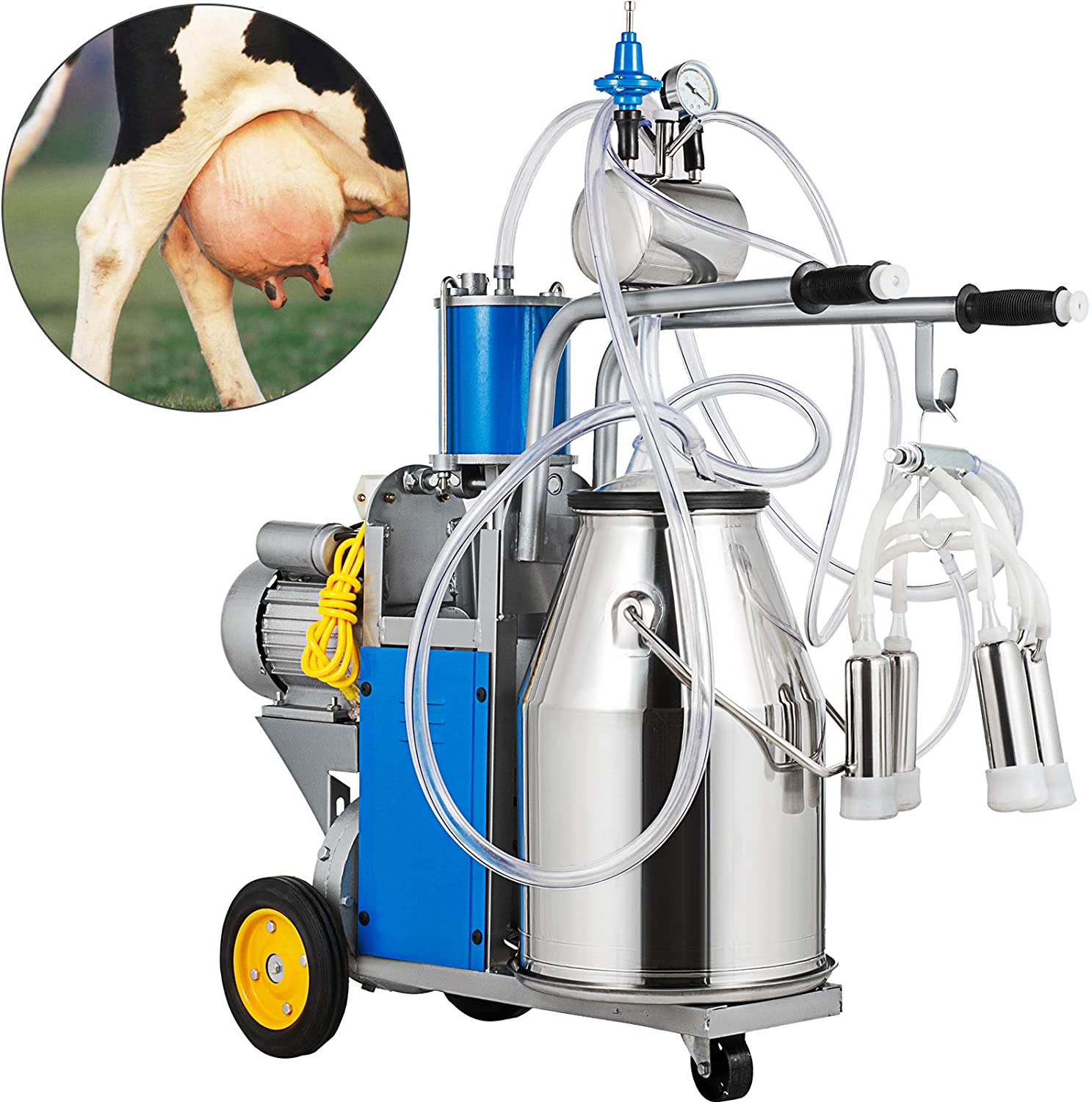
- Yosooo electric portable impulse vacuum pump goat/sheep/cow milker has a two liter milk container which is good for about 10 goats, or a small to medium farm. It’s lightweight but durable so you can pick it up and take it where needed.

- The Hantop Goat Milking Machine is a portable milker that operates with a rechargeable battery so it can be used in remote areas. The charges lasts 2-4 hours. You can get it with a 7 liter or a 14 liter milk container. It is simple to use and is a good milker for a small dairy. If you have been milking by hand, then the Hantop is a good alternative.

Best Goat Milking Stand
If you want to keep your sanity, and back, intact during your dairy goat farming endeavor, you need a milking stand (also known as a milking stanchion).
There are commercial stands available in farm supply stores and online, or you could buy the plans to make one, or even rig one up yourself. There are many sites and videos online that walk you through the process.
Here’s a look at some milking stand options to give you an idea for yours:
- Goatstandcom carpenter build goat stanchion is available in two sizes, and both hold over 250 pounds on their platforms. They are made of untreated SPF wood and with heavy duty hardware and zinc plated corner braces. You assemble the kit yourself. This same supplier has a 32 x 18 Pygmy goat milking stand that would work great for goats like Nigerian dwarfs too.

- This aluminum goat milking stand is a bit higher priced than a wooden stand, but it’s made to last and it’s easy to fold up and slide away if you don’t have the space for a permanent stand.

- Fiasco farm’s website has detailed plans for building your own goat milking stanchion. It’s a good solid stand and the directions are easy to follow. The plans are free for anyone to use, but they do ask for a donation to their cause if you do so.
- If you decide to build your own, the internet is full of DIY sites for any kind of goat milking stand you can imagine. There are plans, PDFs, and videos. All you have to do is choose the one you like or the one that you can make.
Best Goat Milking Shed
Your goats probably won’t mind where you milk them. The milking shed – or area – is more for your convenience. It’s a good idea to have a space that shelters you, your animals, and your equipment from weather, has a power source, source of water (it isn’t essential, but it’s a big bonus), and a way to get your animals in and out easily.
If you have a dedicated space for your milking equipment and supplies, it’s easier to keep everything clean and to have your necessities handy. You don’t want to have to run into the house to get your forgotten bucket while a doe is waiting in the stand to be milked.
Other Supplies for Your Goat Dairy Operation
Along with your milking machine and its accessories, and your milking stand, you might want to add a few supplies to your milking shed to make the milking process go more smoothly and help you keep everything sanitary.
- Using a milking stool is a personal preference. There are stools available on the web, you can make your own using online instructions, or you can use a turned over, heavy-duty plastic pail like many do. If you use a stanchion, you might be comfortable sitting right on the platform.
- A goat hobble is something you should have handy even if you don’t have a fussy doe at the moment. You will someday. Hobbles look like dog collars with double loops. They don’t hurt the animal unless you tighten it too much. They gently prevent the goat from kicking while you’re milking. Weaver Goat Hobbles are made in the USA and are easy to adjust.
- Milking pails are necessary if you milk by hand, but you should have at least one around even if you use a milking machine. A five quart, stainless steel pail with handles and a cover is ideal. They are a bit pricey, but they last forever. If you can’t find one with a cover, think about getting a transport can too. They are also available in stainless steel, but you can use food-grade plastic jugs to get your milk into your processing room.
Some supplies you might find handy for processing your milk are the following:
- Strip cups with black filters are used to check the doe’s foremilk. That’s the first milk that comes out of the teat during milking. Before you hook up your milker, you should check the foremilk from both teats. It’s better to use a dedicated cup rather than your hands, so you avoid contamination of unaffected teats or milk.
- A milk strainer. It’s nice to have a shiny stainless steel strainer and disposable filters that fit in snuggly. There are great milk strainers available online, but you can get the job done with a funnel and sterile pieces of cheesecloth just as well. If you are selling your milk, you should make sure to follow the regulations.
- Any equipment for pasteurizing milk should be stainless steel. A double boiler comes in handy for pasteurizing. If you have a large farm with a lot of milk to deal with, a vat pasteurizer might come in handy. There are many different types, brands, and sizes of vat pasteurizers on the market to choose from.
One that is good for a small to medium farm is the Milky 3.7 gallon pasteurizer made by Milky Austria. It is made completely of stainless steel, has an adjustable thermostat, and programmable timer. You can use it for yogurt and cheesemaking too.

- A lot of people wonder if they’ll need a milk chiller. If you can get your milk from the goat to its dedicated refrigerator, or into pasteurization or processing within two hours, you probably don’t need a special chiller. You definitely want to treat it as quickly as possible to avoid bacterial growth, so if you have a problem with the two hour window, you should rig up a cooling system, buy a cooler, or maybe install an old refrigerator in your milking shed.
Taking care of your animals is your number one priority. Not only is it humane to keep them in good health, it’s important for the quality of your milk. Here are some products you can use to care for your goats.
Supplies to Care for Dairy Goats
- Udder wipes are your first line of defense in keeping your does’ teats clean and healthy and your milk sanitary. You can buy commercial udder wipes online or at a farm supply store in your area. You can also make your own by looking up a “recipe” online. Most use paper towels saturated in a mixture of oil like baby or calendula, a dash of dishwashing liquid, water, and a few drops of tea tree oil and lavender.
- Medications for goats. If you are new to dairy goat farming, the best policy is to get help from your veterinarian. Call him or her if you have an obviously sick doe, one that doesn’t seem like her usual self, or one that tries to kick when you touch her teat. Also, it might be a good idea to let the vet take care of the routine health care like deworming in the beginning, or until you feel more comfortable with the tasks.
You can help your animals stay healthy by giving them the best care possible. Give them high quality feed, make sure their pasture areas are safe from poisonous plants, give them lots of outdoor time, keep a stress-free living environment, keep them clean, and take every precaution when milking so they don’t get injured.
What Can you Do with Goat Milk?
Obviously, you can drink it!
But there is much more that it can be used for. From cheese to goat milk bath bombs, there are quite a few options! Increasingly, goat milk for dogs is becoming more popular, especially with the raw food movement.
FAQs about Dairy Goats and Dairy Farming
Goats begin producing milk as soon as they give birth (called freshening). Some people separate the dam (mommy) from the kids immediately and bottle feed them. If you want to avoid bottle feeding, let the kids stay with the dam for two weeks without any separation. After two weeks, separate them at night only. In the morning, you can milk your dam and them let her nurse her kids all day. They’ll get the nutrition they need from her milk and fill their bellies with grain and hay. Kids start eating solid food around three days old. If you do this, the kids should be fully weaned at eight weeks old and all the milk will be yours.
If you’re planning to milk by hand, don’t wait until day one to learn the basics. You can prepare yourself for hand-milking by watching videos. There are lots of great ones on You-Tube. Mary’s milk monsters style is a perfect example and a good one to get the basics down before you try it yourself.
If you are using a milking machine, it should come with instructions, but you can also find videos online for operation instructions unique to your type of machine.
Milking your goats twice a day is probably the best. More milking stimulates milk production, so twice is better than once. Milking more often than twice is a lot of work for a result that most likely isn’t worth it. You should shoot for a 12-hour schedule. So, if you milk at 6:00 a.m., you can milk again at 6:00 p.m. A little leeway is fine, but your does might get uncomfortable if left too long without milking. This can also promote mastitis.
There’s a long list of things that can happen when it’s goat milking time, but most of them are just annoying and not threatening to the health of the animal. Things like pails being knocked over or the doe stepping into the pail, the electricity goes off, or you’ve forgotten something on the other side of the room; these things happen to even the most experienced dairy goat farmer. They are also little lessons that can help you become a better goat farmer.
The most important milking problems to avoid are injury to a teat and mastitis. Proper teat care before and after milking, keeping an eye out for cuts, scrapes, or other injuries, and checking the foremilk of every teat will go a long way to preventing milking problems in your herd.


